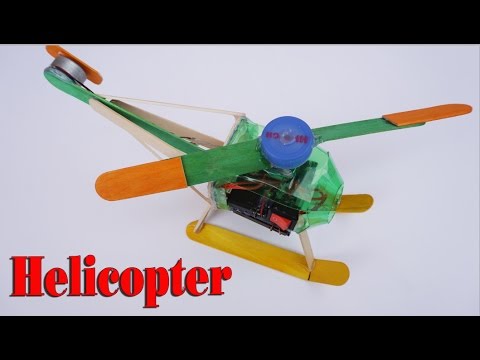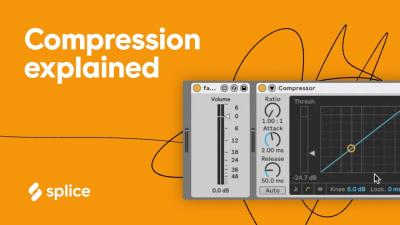Building a helicopter at home might sound like a daunting task, but with the right guidance and materials, it can actually be a fun and rewarding project! In this blog post, we’ll walk you through the essential steps to create a working model helicopter powered by a motor. Whether you’re a hobbyist looking to learn more about aerodynamics or just want to have some fun, this guide will help you take flight. Let’s get started!
Materials Needed for Your Helicopter Project

Before you start assembling your helicopter, it's crucial to gather all the necessary materials. Having everything at your fingertips will make the building process smoother and more enjoyable. Here's a comprehensive list to help you out:
- Wooden or Plastic Frame: This will serve as the structure of your helicopter. Balsa wood is a popular choice due to its lightweight properties.
- Motor: A small, lightweight electric motor will provide the necessary power. Look for a motor with a high RPM (revolutions per minute) to achieve sufficient lift.
- Propeller: Choose a propeller that matches the motor’s specifications. Typically, plastic propellers are adequate for home projects.
- Battery: A rechargeable lithium-ion battery is a good option. Make sure it’s compatible with your motor to avoid any damage.
- Electronic Speed Controller (ESC): This component allows you to regulate the motor's speed. It’s essential for controlling your helicopter's ascent and descent.
- Wires and Connectors: You'll need these to connect the motor to the battery and ESC. Make sure they can handle the current without overheating.
- Switch: A simple on/off switch will be useful for turning your helicopter’s motor on and off without disconnecting the battery.
- Glue or Screws: Use strong adhesive or screws for assembling the parts of your helicopter securely.
- Sandpaper: This will help smooth out rough edges of wood or plastic to prevent any injuries during assembly.
- Tools: Don’t forget to gather some essential tools, such as a screwdriver, wire cutters, and a soldering iron for making electrical connections.
Once you have all these materials, you’ll be well on your way to building your helicopter. Remember, organization is key! Lay everything out nicely and prepare to dive into the assembly process. In the next sections, we’ll break down the step-by-step procedures, troubleshooting, and tips for making your helicopter not just a model but a flying marvel!
Also Read This: How to Perform an Attitude Adjustment in Wrestling on Dailymotion
3. Understanding Helicopter Mechanics

Before we dive into the nitty-gritty of actually building your helicopter, it’s crucial to get familiar with the fundamental mechanics that will play a significant role in your project. Understanding how helicopters work will not only make your building process smoother, but it will also enhance your overall appreciation of this fascinating flying machine.
At the heart of helicopter mechanics are a few key components:
- Rotors: These are the large blades that rotate around the helicopter's body, generating lift. Helicopters have main rotors and tail rotors, both crucial for different functions.
- Engine: This provides the necessary power to turn the rotors. In our case, we’ll focus on using a motor to mimic this function.
- Tail rotor: This helps counteract the torque effect produced by the main rotor. Without it, the helicopter would spin uncontrollably.
- Controls: Different control mechanisms allow the pilot to adjust the helicopter’s pitch, roll, and yaw. Understanding these will help in the design phase.
Let’s break these down even further:
- Lift Generation: Lift is generated when the rotors spin at high speed, creating differences in air pressure above and below the blades. This principle of lift is what allows helicopters to rise into the air.
- Thrust and Control: The angle of the rotor blades, known as the blade pitch, can be adjusted to increase or decrease thrust, allowing you to control the ascension or descension of the helicopter.
- Stability and Maneuverability: Helicopters can hover in place, ascend vertically, and maneuver in various directions. This versatility comes from how the main and tail rotors work together to provide stability.
By understanding these essential mechanics, you’ll have a better grasp of what you need to incorporate into your helicopter design. Not only will this knowledge guide your construction, but it will also allow you to troubleshoot any issues that arise during testing.
Also Read This: How to Download Dailymotion Video with 4K Video Downloader: A Detailed Tutorial
4. Step-by-Step Instructions for Building Your Helicopter
Now that we have a basic understanding of helicopter mechanics, let’s roll up our sleeves and get started on building your very own helicopter. It’s a fun project that combines creativity with engineering, and you’ll learn a lot along the way!
Before you start, gather the following materials:
- Small electric motor
- Helicopter blades (can be made from lightweight plastic or wood)
- Battery pack (that matches your motor requirements)
- Frame materials (like balsa wood or plastic tubing)
- Control mechanisms (like servos for pitch adjustment)
- Wire, glue, and tape
- Tools such as a drill, screwdriver, and scissors
Once you’ve gathered everything, follow these steps:
- Design your frame: Start by creating a design for your helicopter’s frame. The frame will house your motor and connect all the parts. Sketch out your design and ensure it’s lightweight yet sturdy.
- Construct the frame: Use your chosen materials to construct the frame based on your design. Make sure to leave ample space for the motor and battery.
- Mount the motor: Secure the motor at a central point on the frame. This will serve as the heart of your helicopter.
- Attach the rotor blades: Connect your helicopter blades to the motor shaft. Ensure they are balanced and properly aligned for effective lift.
- Set up the electricity: Connect the battery pack to your motor with wires. Double-check all connections to prevent short circuits.
- Install control mechanisms: If you’re using servos or any electronic control systems, install them according to their instructions to ensure they function properly.
- Testing: Once everything is in place, it’s time for a test run. Start with brief power-ups to see how everything spins. Observe the movement of the rotors and listen for any unusual sounds.
- Tweak and improve: After your initial tests, make adjustments where necessary. This might include balancing the rotor blades, changing the angle of the controls, or even redesigning parts of the frame.
And there you have it! With some patience and creativity, you’ll have your very own helicopter up and running. Remember, every great builder learns through trial and error, so don’t get discouraged by challenges; embrace them as part of the journey.
Also Read This: Master the UNO Card Game with Step-by-Step Dailymotion Videos
5. Tips for Assembling Your Helicopter Motor
Assembling the motor for your homemade helicopter can be a bit of a challenge, but with the right approach and some careful planning, you’ll find it can also be an enjoyable experience. Here are some essential tips to guide you through the process:
- Read the Instructions: Before you start, make sure to thoroughly read any instructions that come with your motor kit. They often contain crucial details that can save you time and frustration.
- Gather Tools and Materials: Collect all the necessary tools and components beforehand. Common tools you may need include screwdrivers, pliers, and a soldering iron. Having everything ready makes the process smoother.
- Organize Your Workspace: Set up a clean, well-lit workspace. Keeping everything organized helps prevent losing small parts and allows you to focus on the assembly without distractions.
- Take Your Time: Don’t rush through the assembly. Take your time to ensure everything is fitted correctly. Double-check connections and integrations as you go. It’s easier to catch mistakes early on!
- Secure Connections: When connecting wires or parts, ensure they’re secure. Loose connections can lead to malfunctions later, so always check that screws are tightened and connectors are snug.
- Solder with Care: If your motor requires soldering, make sure to practice if you’re not experienced. A solid solder joint means better conductivity and a more reliable motor.
- Verify Compatibility: Ensure that all components are compatible with your motor. Sometimes parts from different kits don’t mesh well, leading to issues down the line.
- Consider Heat Distribution: Motors generate heat; ensure that your design allows for proper heat dissipation. This can prevent overheating and extend the lifespan of the motor.
Following these tips can help you assemble your helicopter motor effectively and get a functioning unit. Pay attention to the details—you’ll be glad you did when you take your helicopter for its first flight!
Also Read This: Is It Legal to Watch British TV Series on Dailymotion
6. Testing Your Helicopter: What to Expect
Congratulations! After all that hard work, it’s time to test your newly assembled helicopter. This stage is thrilling but comes with its own set of expectations. Here’s how to go about testing your helicopter and what to look for during the process:
- Choose the Right Environment: Select an open area with plenty of space, preferably away from trees and power lines. A soft, grassy field is ideal in case of any rough landings.
- Check Everything Twice: Before taking off, do a thorough pre-flight check. Look over the motor, blades, and battery connections. Make sure everything is secure and that there are no visible issues.
- Start Small: On the initial test flight, keep it low. Hover the helicopter a few feet above the ground to assess stability and control. This will allow you to make any necessary adjustments without risking major damage.
- Monitor Performance: Pay close attention to how your helicopter behaves during the flight. Does it tilt to one side? Is the motor overheating? Watch for signs of distress, and be ready to cut the power if needed.
- Gauge Battery Life: Keep track of how long the helicopter stays in the air. You’ll want to know the battery life and efficiency to plan for future flights. It might take a few tries to find the optimal flying time.
- Document Your Findings: Take notes on performance, issues encountered, and any changes you made during the test. This will help you learn and improve in future builds or modifications.
Testing your helicopter is not just about seeing it fly—it’s a learning experience that will help you refine your skills and build better helicopters in the future. Enjoy the process, and remember that every flight is an opportunity to learn!
Also Read This: How to Upload a Thumbnail to Your Dailymotion Video for Better Engagement
7. Common Issues and Troubleshooting
Building a helicopter can be an exciting yet challenging endeavor. As with any DIY project, you might encounter a few bumps along the way. Here are some common issues you might face while constructing your helicopter, along with troubleshooting tips to help you get back on track.
1. Motor Doesn't Start
- Check the battery charge. A dead battery won't power your motor, so ensure it's fully charged.
- Inspect the wiring. Loose or damaged connections can prevent the motor from receiving power.
- Ensure the motor is properly mounted. If it's loose, it can misalign and fail to start.
2. Helicopter Doesn't Lift Off
- Examine the rotor blades for proper alignment. If they’re not angled correctly, they might not generate enough lift.
- Check the weight distribution. If your helicopter is too heavy on one side, it may struggle to take off.
- Consider the pitch of your blades. Too steep of a pitch can make it hard for the helicopter to lift off.
3. Unstable Flight
- Adjust the center of gravity. Adding or shifting weight can stabilize your flight.
- Ensure rotor speeds are balanced. If one rotor is spinning faster than the other, you'll have an uneven flight.
- Inspect for damaged blades. Cracks or chips in the rotor blades can affect stability.
4. Excessive Noise or Vibration
- Check for loose components. Tighten screws and bolts to eliminate rattling parts.
- Examine the motor mounts. A poorly secured motor can cause vibrations that lead to noise.
- Make sure blades are balanced. An imbalance can create additional noise and vibration during flight.
Remember, troubleshooting is a part of the learning process. Don't hesitate to revisit your plans, verify your work, and make adjustments as needed. It's all about trial and error!
Also Read This: How to Cook Gajar Ka Halwa: Detailed Cooking Instructions on Dailymotion
8. Additional Resources and Video Tutorials
As you venture further into building your helicopter, you might find yourself seeking additional help or inspiration. Fortunately, the internet is packed with resources that can assist you in perfecting your craft. Here’s a list of some fantastic resources and video tutorials that can enhance your helicopter-building journey:
- YouTube Helicopter Building Tutorials: A treasure trove of visual guides and demonstrations. You can find everything from basic concepts to advanced techniques.
- RC Groups Forum: A community of hobbyists where you can ask questions, share ideas, and learn from experienced builders.
- Books: Look for titles like “Model Helicopters: A Complete Guide,” which cover the fundamentals and help you with step-by-step instructions.
- Instructables: A fantastic website offering detailed guides and user-submitted projects, including helicopter plans.
- DIY Forums: Check out platforms like Reddit (`r/RCHelis`) where you can engage in discussions and get tips from fellow enthusiasts.
Utilizing these resources can save you time and help you overcome challenges you may encounter along the way. Remember, the best way to learn is by connecting with others in the field – so don't shy away from participating in discussions and asking questions!
Conclusion and Encouragement to Experiment
Building a helicopter with a motor at home is not only an engaging project but also a fantastic way to enhance your understanding of engineering and physics. By following the steps outlined in this guide, you’ve taken an important step into the fascinating world of aerodynamics and mechanics.
As you wrap up your build, remember that experimentation is key to success in any DIY project. Here are a few tips to encourage your creative spirit:
- Test Different Designs: Don’t hesitate to tweak your rotor blades or fuselage design to see how changes affect flight performance.
- Try Various Motors: Experimenting with different motor sizes and types can yield surprising results in your helicopter’s speed and lift capabilities.
- Adjust Weight Distribution: Changing where the weight is placed can significantly impact stability and maneuverability.
Documentation is equally important during your experimentation. Keep a journal of your designs and results to reference later. This will help you understand what works and what doesn’t, turning every flight into a learning opportunity.
Lastly, don't get discouraged by setbacks. Every great inventor has faced challenges along the way. Embrace the journey of learning and discovery, and you’ll find joy in every successful flight — as well as lessons in every crash. So go ahead, gather your materials, and let your creativity take flight!
 admin
admin








